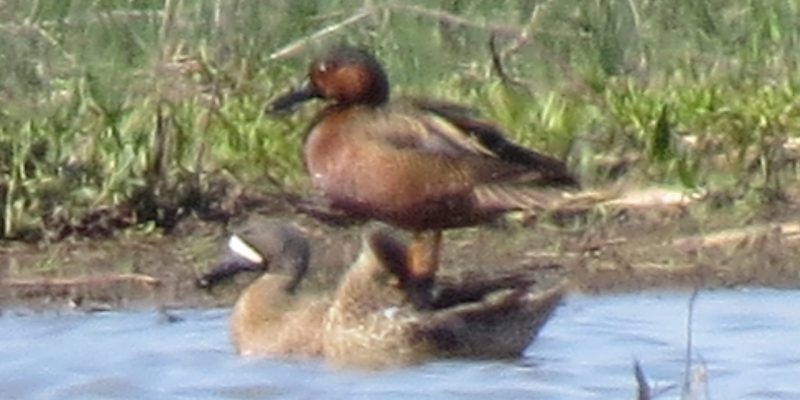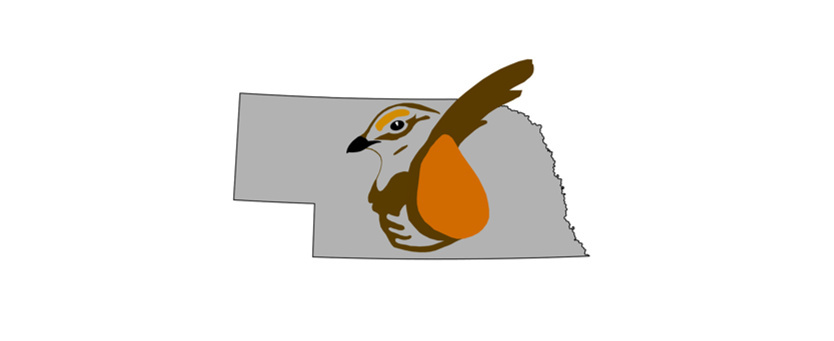Mareca strepera x americana Status: Accidental in spring. Records: The only record is of one at Scottsbluff WTP, Scotts Bluff Co 14 Mar 2022 (Mlodinow, eBird.org). The observer’s notes are: Long silver tertials and lack of long tail point to GADW rather than NOPI as non-AMWI parent. Also, note small white area in front of […]
Redhead x Greater Scaup
Aythya americana x marila Status: Accidental in fall. Taxonomy: Redhead is known to have hybridized with several North American Aythya in the wild, Canvasback, Lesser Scaup, Greater Scaup, and Ring-necked Duck (Woodin and Michot 2020). Record: One was identified as this hybrid and photographed at Lake Ogallala, Keith Co 18 Nov 2024 (Mlodinow, eBird.org). The […]
Gadwall x Northern Pintail (hybrid)
Mareca strepera x Anas acuta Status: Rare casual spring visitor statewide Records: The only record is of one at Mormon Canal, Knox Co 29 Mar 2024 (Tommy Childers, Joni Rauert; eBird.org). Comments: Including the Nebraska record, there are only four Great Plains records, the others one in western Minnesota and two in eastern Colorado, along […]
Cinnamon x Green-winged Teal (hybrid)
Spatula cyanoptera x ANAS CRECCA Status: Casual in spring. Records: There are two records: 7 May 2017 Father Hupp WMA, Thayer Co (Jorgensen photos, ebird.org) 16-18 Mar 2024 Wagon Train SRA, Lancaster Co (Straus et al, photos, eBird.org) Comments: This is a rare hybrid; the two Nebraska records are the only ones on the Great […]
[Fork-tailed Flycatcher]
Tyrannus savana Status: No accepted records Taxonomy: Four subspecies are recognized, all from southern Mexico to South America (Gill et al 2022). Comments: A report of two in Deuel Co 27 Aug 2023 was not accepted by NOURC, noting that the presence of two birds “would be exceptional” (Brogie 2023). There are about six records […]
[Whooper Swan]
Cygnus cygnus Status: No accepted records Taxonomy: No subspecies are recognized (Gill et al 2022) Comments: There are two reports of presumed escapees or releases: 19 Dec 2023 Two Rivers SRA, Douglas Co (Elizabeth Winter, eBird.org; Brogie 2024) 6 Mar 2022 Yutan, Douglas Co (Linette Bolin Nelson fide Thane Dinsdale). This species is often reported in […]


